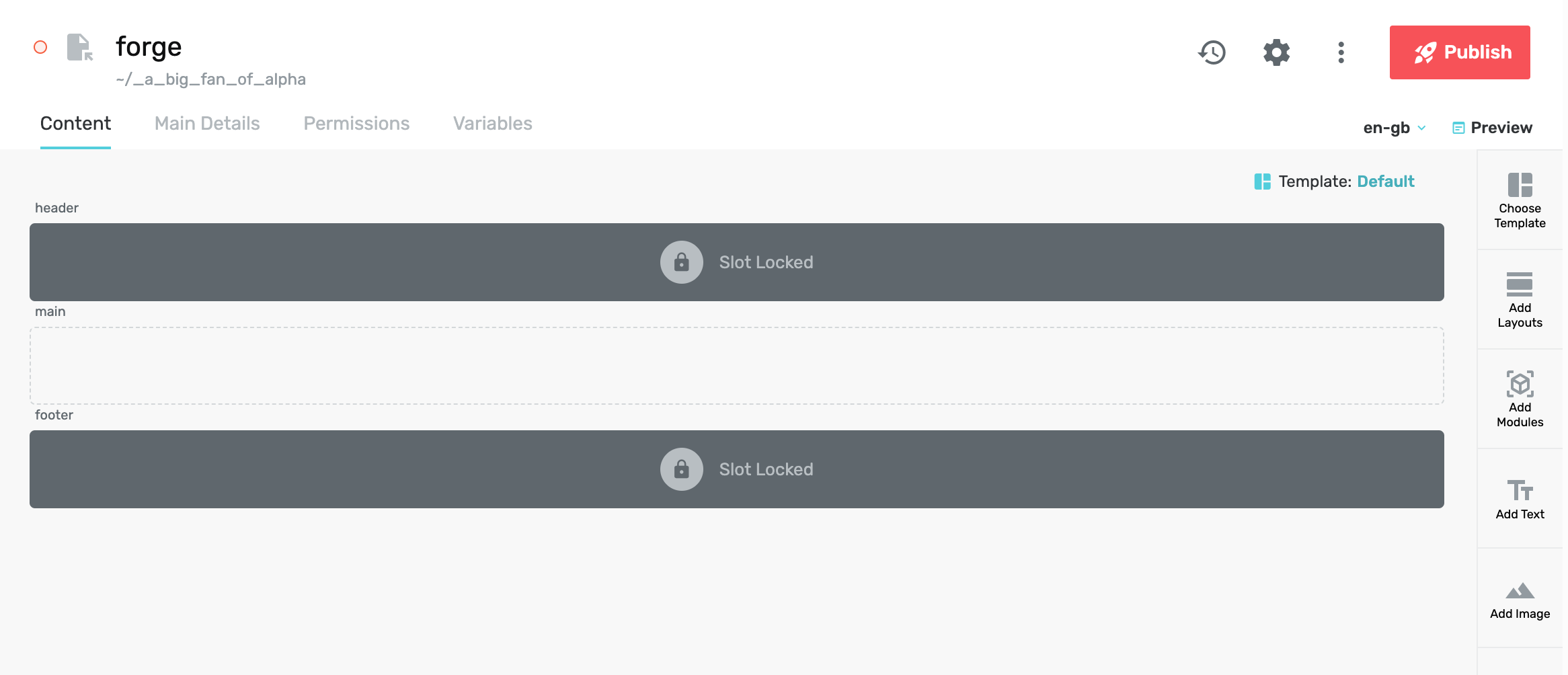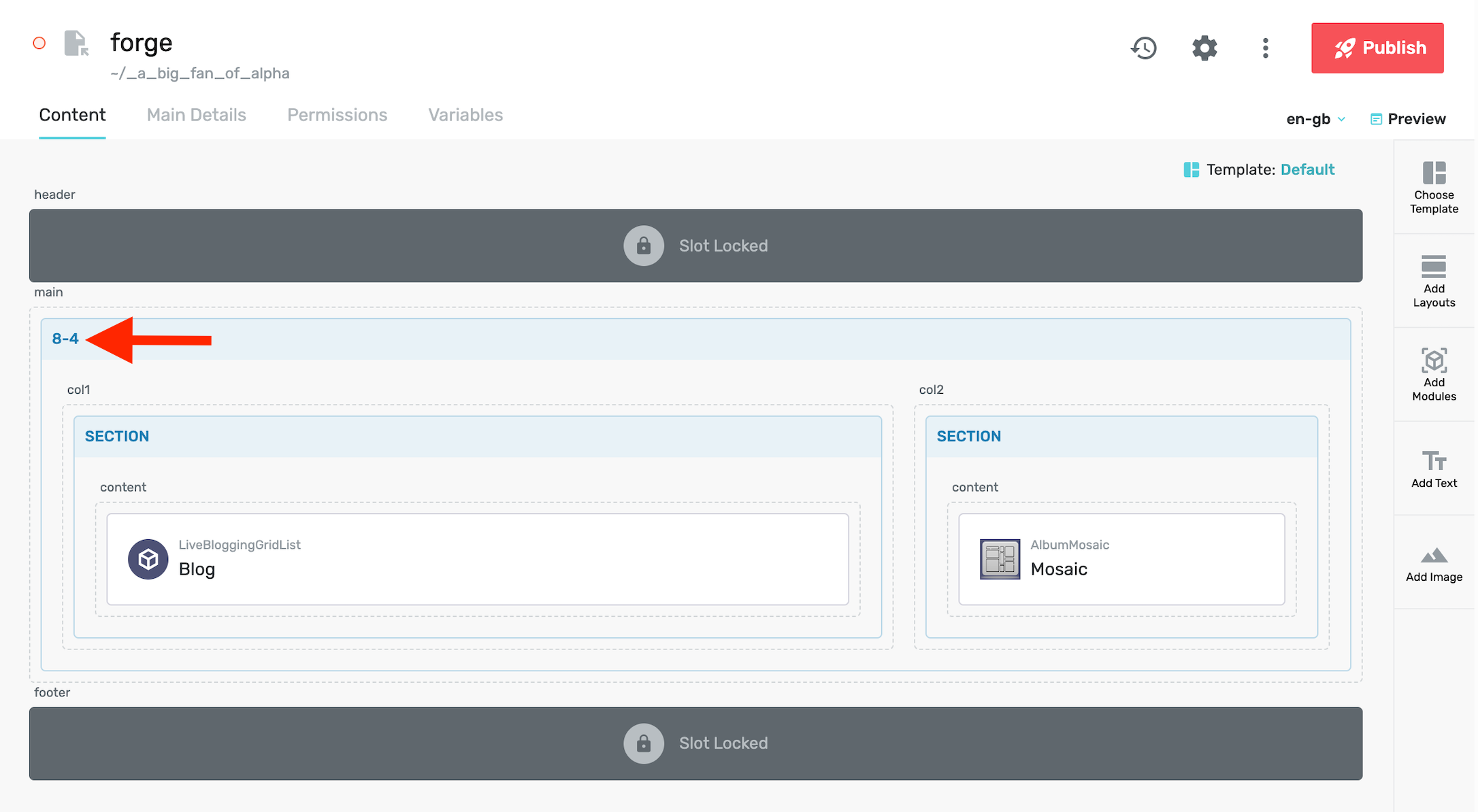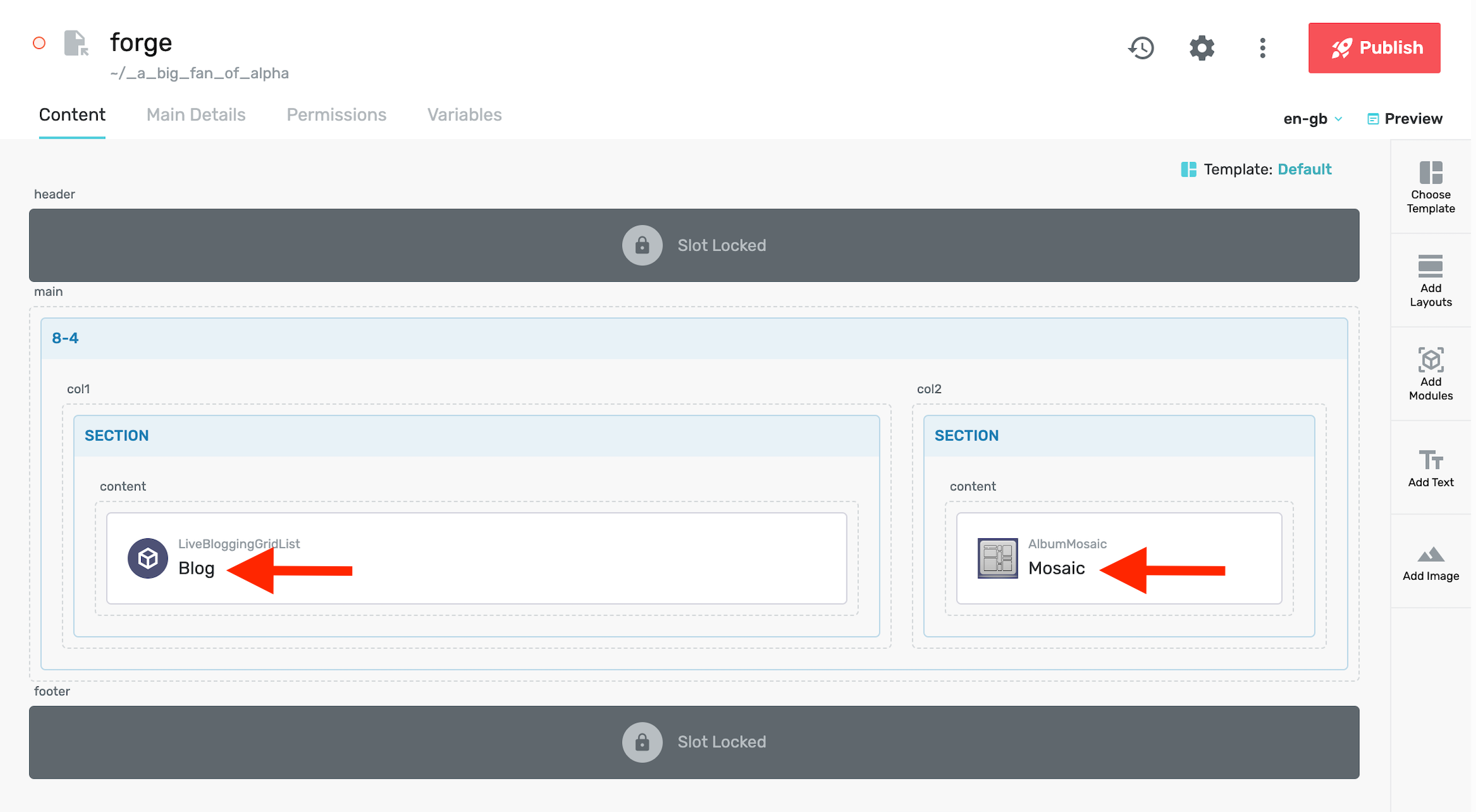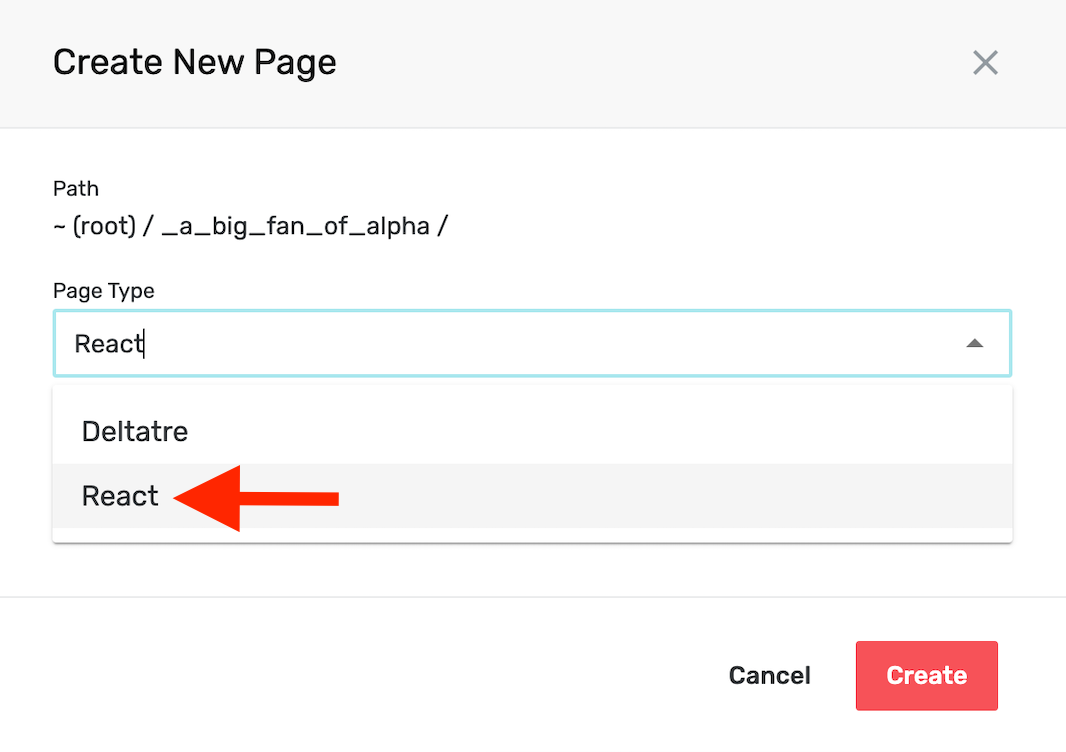Introducing the page type
Imagine you must build a page in the Page Builder, and the page:
- Has an header, a main section, and a footer
- Has a two-column main section with with 8-4 span ratio
- Has the first column containing a blog timeline
- Has the second column containing a mosaic
What you must do to build such a page is:
- Give the page a header-main-footer structure by selecting a template (the default one, in the example below):

- Give the main section a two-column structure by adding a 8-4 layout:

- Add a blog module to the first column and a mosaic module to the second column:

When creating the page, you determine the available catalog of templates, layouts, and modules by selecting the Page Type. In the example below, there are two available catalogs, Deltatre and React:

How to define Page Types
Editorial teams can group templates, layouts, and modules into Page Types based on their business needs. For example, they can have a Page Type per delivery platform (Web, Android, iOS, etc), or a Page Type per type of content the page hosts.
For each Page Type, editorial teams design the catalog of templates, layouts, and modules and define them by using the JSON format.
The Defining page types section explains step-by-step how to proceed.
How to ingest Page Types
Once the JSON definition of a Page Type's templates, layouts, and modules is ready, the way to deliver it to FORGE is by:
- Developing API endpoints to make that JSON definition accessible to FORGE
- Connecting FORGE to those API endpoints
- Triggering the ingestion in a FORGE admin page.
The Ingesting page types section explains step-by-step how to proceed.
References
For detailed how-tos on creating and managing pages, refer to the Help Center articles: